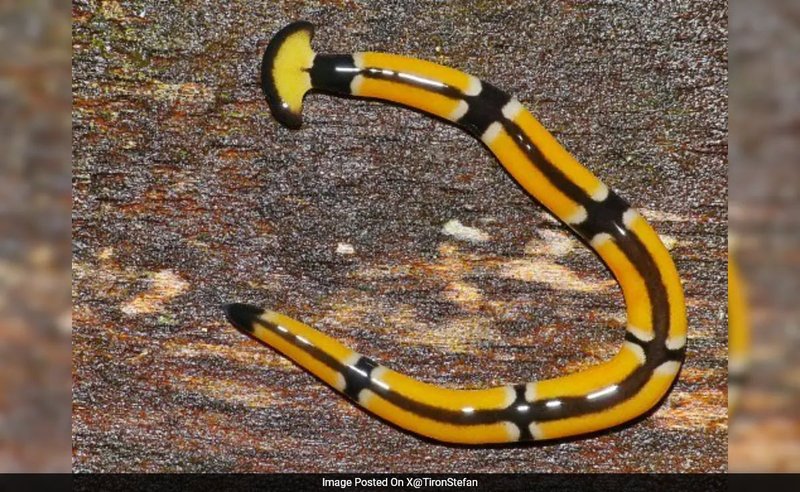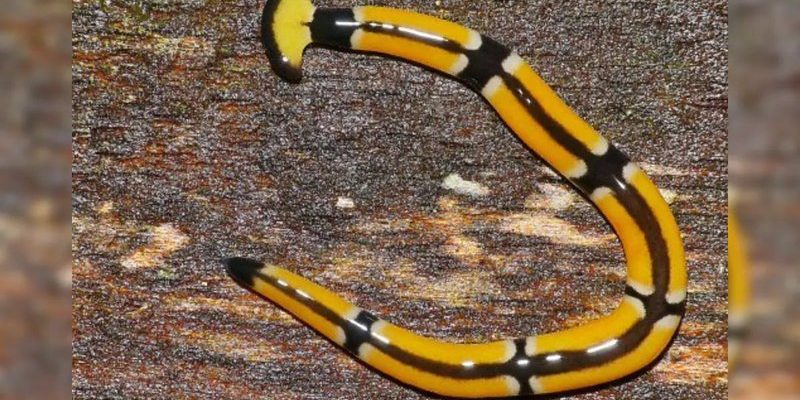
Hammerhead worms belong to a class of animals called planarians, which are known for their incredible regenerative abilities. Think of them as nature’s little superheroes. If you cut them in half, they can regrow their missing parts! I mean, who wouldn’t want that power? But, how does it all work? Let’s break down the science behind this fascinating capability, explore their biology, and see just how resilient these worms are.
What Are Hammerhead Worms?
Hammerhead worms, scientifically known as *Bipalium*, are part of the family of flatworms. They typically live in damp environments like soil or leaf litter, and they can be found in various parts of the world, from the tropics to temperate regions. Their most distinctive feature is their wide, flattened head, which gives them that hammer-like appearance.
These worms can grow quite long, sometimes reaching up to 30 centimeters (about 12 inches). They’re usually brown or gray, often with stripes running along their bodies, helping them blend into their environment. Besides their unique shape, what really sets hammerhead worms apart is their impressive ability to regenerate. But how does this regeneration work?
The Science of Regeneration
Here’s the thing: regeneration in hammerhead worms happens due to specialized cells called neoblasts. These cells are akin to stem cells in humans—they have the potential to develop into various cell types needed for regrowth. When a hammerhead worm is cut, these neoblasts spring into action. They migrate to the injury site and start dividing, leading to the formation of new tissues.
You might be wondering how long this process takes. The regeneration time can vary based on factors like the size of the worm and environmental conditions. Typically, smaller pieces can regenerate faster, sometimes within a couple of weeks, while larger segments may take longer. Isn’t it remarkable how nature has equipped these creatures with such a skill?
How Hammerhead Worms Regenerate
When a hammerhead worm is severed, the regeneration process kicks into gear. The cut edges of the worm start to seal up, creating a protective structure called a blastema. This area is where all the magic happens. It’s packed with neoblasts that start differentiating into the specific cells needed to form the new head, tail, or whatever part was lost.
But here’s where it gets even cooler: these worms can regenerate not just their tails but also their entire head! In some cases, if you cut a worm into several pieces, each piece has the potential to grow into a whole new worm. It’s like a nature-inspired cloning process! This ability is vital for their survival, as it allows them to recover from threats like predators or environmental damage.
Regeneration Limits and Challenges
While hammerhead worms are impressive regenerators, there are limits to what they can do. For instance, if a worm is cut into too many tiny fragments, the pieces may not have enough resources to regenerate successfully. Also, if they’re severely injured or stressed, their regenerative powers can be hindered. It’s kind of like how humans heal—under certain conditions, our recovery slows down.
Another challenge comes from the environment. If a hammerhead worm finds itself in unfavorable conditions—like extreme temperatures, pollution, or lack of food—its ability to regenerate may be compromised. So, while they have some superpowers, they’re not invincible!
Why Regeneration Matters in Nature
Regeneration is fascinating not just for hammerhead worms but for the entire ecosystem. It plays a crucial role in maintaining balance in nature. For organisms like hammerhead worms, their ability to regrow helps keep their populations stable.
Moreover, understanding how these worms regenerate can provide insights into medical science. Researchers are studying their regenerative processes to see if they can apply what they learn to human medicine. Isn’t it intriguing how something so small could contribute to big discoveries in health and healing?
Common Misconceptions about Hammerhead Worms
There’s a lot of mystery surrounding hammerhead worms, and with that comes some misconceptions. One common myth is that hammerhead worms can regenerate indefinitely. While they’re impressive, they do have limits, as we discussed earlier.
Another misunderstanding is that all flatworms behave the same way regarding regeneration. Each species has its own unique abilities and characteristics. So, while hammerhead worms are champions of regeneration, other flatworms might not be as fortunate.
There you have it! Hammerhead worms are not only fascinating creatures but also incredible examples of nature’s regenerative wonders. Their ability to grow back lost parts opens up a world of possibilities for scientific research and inspires awe about the resilience of life.
Next time you hear about hammerhead worms or see one in your yard, remember the amazing journey these little guys can take after being cut. From specialized cells to regeneration limits, there’s so much more to explore in the world of these remarkable worms. Nature truly has its wonders, and hammerhead worms showcase just how resilient life can be!

